Diseases of pears and their treatment. Pest control
Every gardener knows that in order for a fruit tree to bring generous harvests, it must be healthy. And the pear is no exception. Read this article and find out which pests and diseases of the pear are most dangerous and how to deal with them. This information will help you determine in time that the tree has started to hurt and you will be able to provide him with timely assistance.
Content
Diseases
Various ailments begin to manifest themselves in the spring - delicate green leaves turn yellow, bloom and dry out. What to do and what is the reason? These unpleasant manifestations are the first signs that the pear has begun to hurt. Consider the most common and dangerous infections, their signs and methods of dealing with pathogens.
Black cancer
This disease is also called "Antonov fire". It affects the bark, skeletal branches, foliage and fruits. First, small wounds appear in the affected areas in the form of spots, which progress in size over time. Bright brown spots appear along the diameter of these wounds. If you notice red spots on the leaves or fruits, these are also undeniable signs of this infection. Black cancer promotes the appearance of black rot on the fruits: they decrease in size and gradually mummify.
In order for this infection not to affect all your fruit trees, it is necessary to use preventive measures: in the fall, when the leaves begin to fall off, they must be collected and must be burned. Areas of the bark affected by black cancer should be removed with a sharp knife, capturing at least 2 cm of healthy wood during pruning. The resulting wounds are disinfected with a solution of copper sulfate or a special mixture of mullein and clay is prepared, which is used to cover all the cut sites.
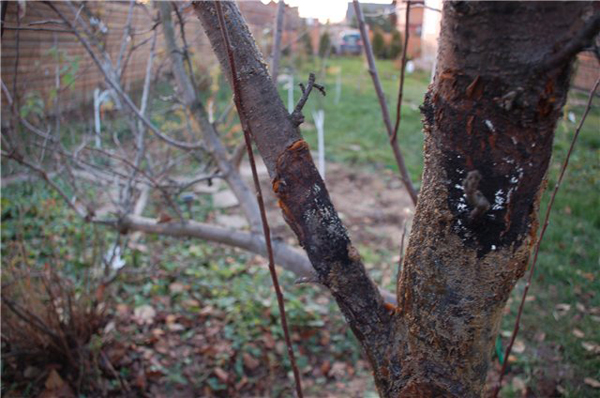
Fruit rot
If the fruits began to rot, then know that this is facilitated by a fungal disease - maniliosis. The infection reaches mass in the second half of summer. First, small brown spots appear on the fruit. Over time, these spots grow and cover the entire area of the fruit. For this pear disease, it is characteristic that the affected fruits do not crumble, but remain on the stalks and contribute to the spread of the infection. Patients with maniliosis, the fruits become unusable.
To stop the spread of the disease, it is necessary to collect and destroy all infected fruits, and it is necessary to remove both from the branches and collect those that have already fallen from the ground. Then it is recommended to spray with Bordeaux liquid or copper chloride (in autumn and spring).
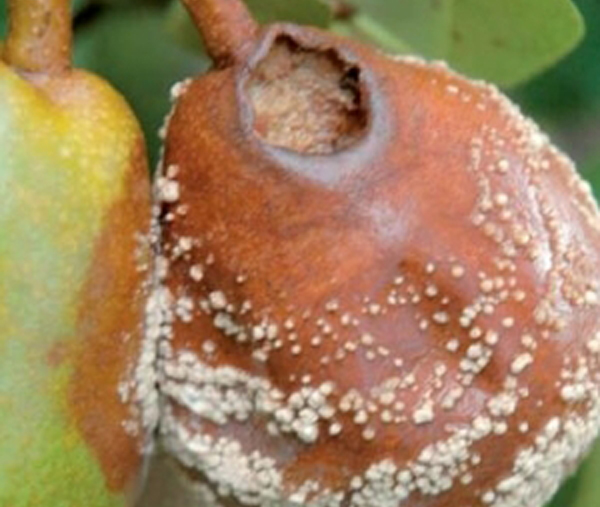
Scab
This ailment is considered the most dangerous and insidious, as it affects the leaves, fruits, shoots and flowers of the fruit tree. If the plant begins to hurt with scab, then without timely assistance, in most cases it dies. Scab development is facilitated by long, heavy rains and cool weather.: small spots are formed on the foliage at first, which gradually grow and become large (from 2-4 millimeters to 2-3 cm). In the event that pear trees are planted very close to each other, this does not contribute to airing and will also be a favorable condition for the development of scab.
If the damage to the foliage is massive, this will certainly affect the harvest: the fruits will be small and in small quantities.The scab can also affect the fruit itself - they are covered with many small dark spots, which merge over time into a large velvet spot. The fruit becomes hard, cracked and unusable. Measures of prevention and control of the disease boil down to the fact that in the autumn period it is necessary to collect fallen leaves, and with the arrival of spring, spraying with Bordeaux liquid and 7% urea solution should be carried out, and the land around the tree must also be cultivated.
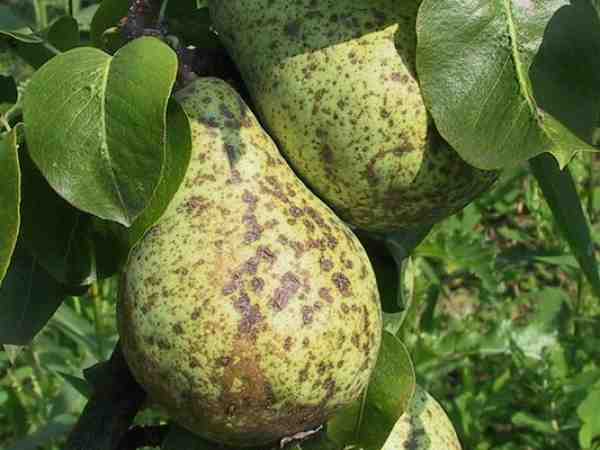
Cytosporosis
This infection affects the bark and has a second name - stem rot. Weakened plants, regardless of age, suffer from infection. The appearance is facilitated by both sun and frost burns, as well as drought and disturbances in agricultural practices. In the course of the disease, the bark changes its usual color to dark red and gradually dries up. Old pears often suffer from this disease. If the disease has just begun and the fungus has not yet damaged the cambium, remove the affected areas with a sharp knife and treat them with a solution of copper sulfate or garden varnish. But it would be better not to treat, but to prevent this disease. To do this, it is necessary to whitewash the trunks in the fall, prevent damage to the bark and remove all dead branches in a timely manner.
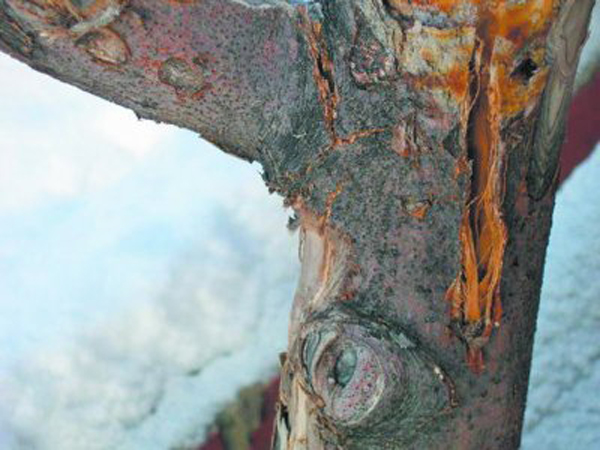
Rust
The causative agent of this pear disease is a pathogenic microscopic fungus. It infects foliage that is covered with bright orange spots and may fall off prematurely. Also, the disease significantly weakens the plant, reducing its immunity. To combat this disease, you need to get rid of the junipers growing in your garden, as they are carriers of the disease. Affected leaves and fruits must be disposed of. Timely spraying should be carried out (in spring - before vegetation and in autumn - after leaf fall), both biological and chemical (sulfur, Bordeaux liquid).
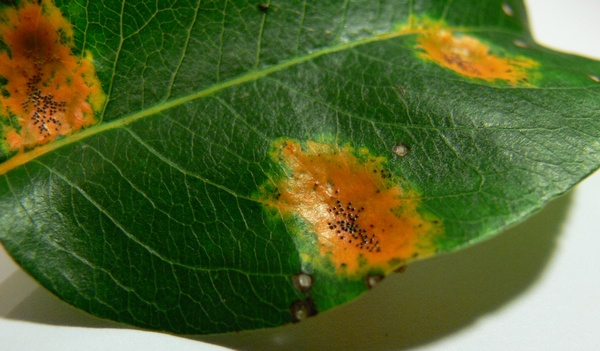
Powdery mildew
When describing pear diseases, one should not forget about such a fungal infection as powdery mildew. Mainly leaves of young shoots suffer from this disease, inflorescences and fruits are less often affected. Affected leaves stop growing and developing, gradually fold, and most of them fall off. Shoots that have suffered from this infection slow down their development, deform and often dry out. On inflorescences, the infection manifests itself in the form of a white bloom. Flowers affected by powdery mildew fall off, and those that remain do not give ovaries. Up to 80% of the entire crop can be affected by this fungal disease.
Warm weather, combined with low humidity, greatly accelerates the spread of the fungus. Methods of combating powdery mildew include regular watering, timely cutting and elimination of diseased shoots in autumn or early spring, as well as the use of chemicals (colloidal sulfur solution and others).
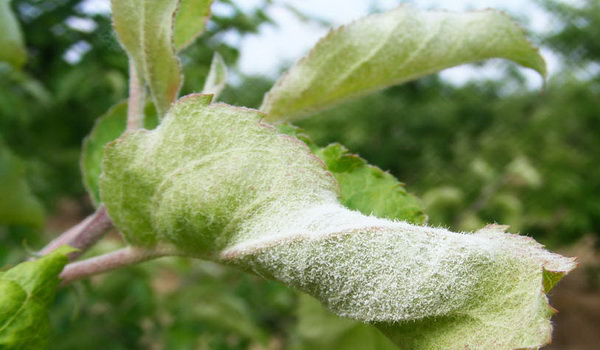
Milky shine
This disease affects both young and old plants. The causes of this pear disease are improper care, as well as weather conditions such as dry air, direct sunlight and a sharp fluctuation in ambient temperature throughout the day, which contribute to the development of a non-parasitic form of this disease. Affected leaves become milky, slightly pearlescent. Several individual branches and the entire plant can be affected.
There is also a parasitic form of infection, its causative agent is a wood-destroying fungus. With this form of infection, the foliage does not change its shape. Only its color suffers: it acquires a metallic hue, and the leaves themselves become fragile and fall off earlier. In order to prevent the development of milky shine, it is necessary to properly and regularly take care of the tree, to carry out agrotechnical measures in a timely manner. If you adhere to all the rules, then the symptoms of the pear disease will pass and it will fully recover.
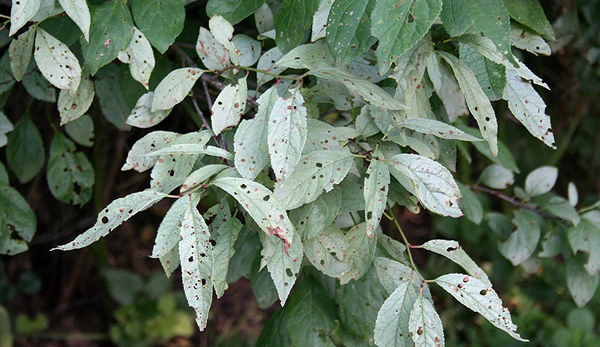
Video "Processing pears from diseases"
This video will tell you how to properly handle pear varieties from pests.
Pear pests and control
Now let's take a look at the main pests that can harm pears.
Green aphid
This insect parasitizes the plant, sucking out all the cell sap from the leaves, which leads to improper development of shoots and stopping their growth. Green aphids are capable of producing sweetish secretions, which contribute to the development of such a harmful parasite as a black fungus.
To combat aphids, plants are sprayed with special preparations. The procedure should be carried out three times. The first spraying is carried out before the blooming of leaf buds. To do this, use the drug "Kinmix". The second - before flowering buds, using the drug "Agravertin". And third, when young ovaries appear, the plant is treated with the Iskra biological agent.
Folk remedies are also used for spraying: a decoction of chamomile, dandelion and garlic. A solution of ordinary laundry soap is very effective against green aphids.
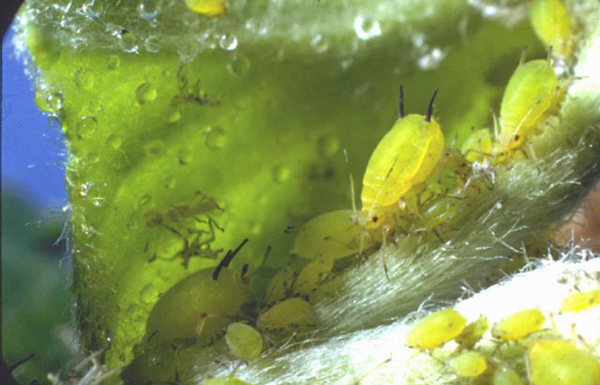
Pear moth
Butterflies lay their eggs on the pear. After a while, caterpillars appear from them. It is they who infect the pulp. Summer varieties of pears are most often affected, since, unlike winter ones, their fruit tissue is very soft and easily damaged by caterpillars.
For prevention and control, the drug "Agravertin" is used before and after flowering. On the 20th day after flowering, use the drug "Kinmix". A month after flowering, final treatment is carried out with Iskra.
Also, do not forget about the autumn harvesting of foliage, followed by its burning.

Pear honeydew or leaf beetle
These parasites do considerable harm to the tree: they suck out all the cell sap, produce substances that are a favorable environment for the sooty fungus. Due to the lack of cell sap, young buds, buds and foliage begin to shrivel and fall off. The fruits are deformed, the taste is lost, and the yield indicators suffer. To combat this pest, it is necessary to sprinkle with Karbofos in early spring, before flowering. After flowering, re-spraying is carried out, while using the drug "Iskra" or "Agravertin".
To combat the larvae of these pests, folk remedies are also actively used: decoctions from ordinary yarrow, tobacco dust, dandelion or pharmacy chamomile are used.

Pear mite
These parasites overwinter in the dead bark, and can also be located under the scales of young buds. With the arrival of spring, the pear mite moves to the inside of the leaves and sucks the juices out of them, as a result of which swellings appear on the affected leaves. The activity of the pear mite can contribute to the disruption of the normal development of the tree: the shoots are deformed, the foliage falls off prematurely. To combat this pest, spraying with a solution of colloidal sulfur is effective.
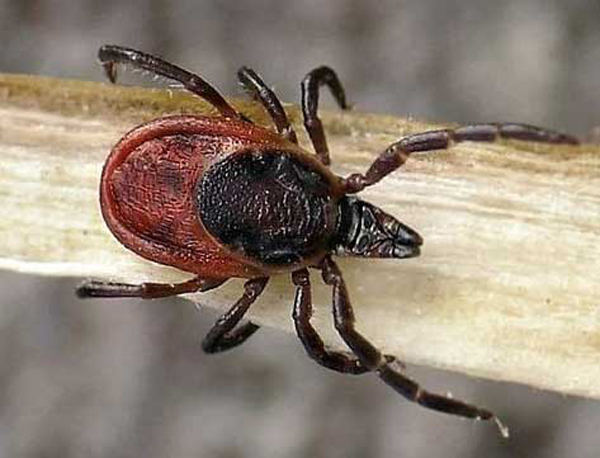
Leaf roll
This is a small, movable caterpillar. Only the foliage is affected: due to the actions of the caterpillar, they curl up into a tube and decrease in size. In order to prevent the appearance of this pest in their garden, even before bud break, trees are treated with the "Cymbush" preparation.
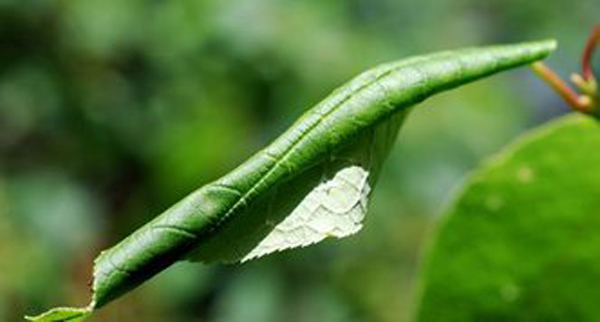
In this article, you learned which pear diseases and pests are most dangerous for this plant. We advise you to regularly carry out preventive examinations of leaves, bark, as well as fruits on a fruit tree. If you find even minor changes, it is better to immediately carry out the necessary medical measures. Remember that diseases develop very rapidly, and small pests are capable of causing irreparable harm to the fruit tree in a short period of time. Do not forget about preventive spraying as well. Indeed, thanks to them, the development of most diseases can be prevented.
